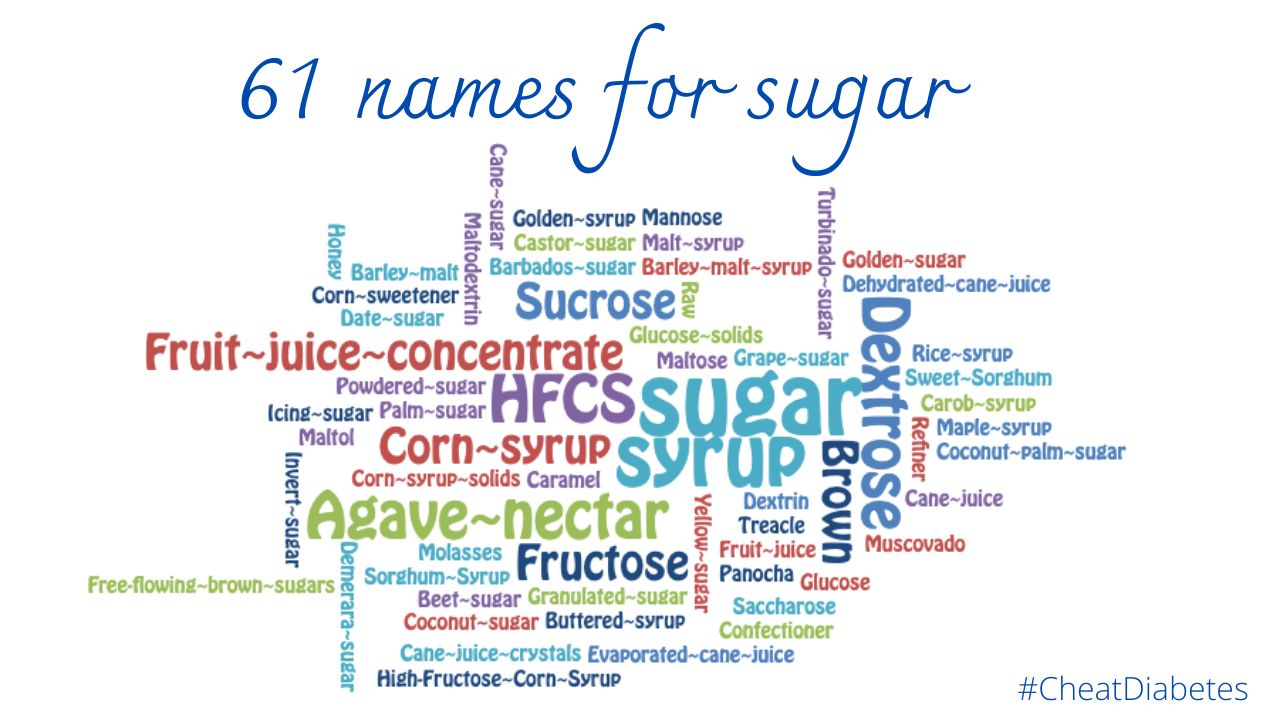Added Sugars: What You Need to Know To Avoid Diabetes

We all need to know how to protect ourselves and our families from prediabetes and avoid diabetes.
Key information about added sugars can make all the difference.
Did you know?
- Added sugar is hiding out in 74% of packaged foods
- One 12 ounce soda per day can increase your risk of dying from heart disease by almost 1/3 AND increase your risk of developing diabetes by over 20%.
- Added sugars in foods and drinks can damage your liver as much as alcohol. 1 in 3 American adults have non-alcoholic fatty liver disease.
* these and many other sugar facts can be found at the University of California San Francisco website: sugarscience.ucsf.edu.
What is added sugar?
Added sugars are sugars added during processing. Until recently, the US food label (the Nutrition Facts label) just showed total sugars - so consumers had no idea how much was naturally occurring sugar, and how much was added sugar. Now, for the first time ever, the this label is required to include added sugars (which are the ones that are more likely to contribute to health problems). In the past, food manufacturers might add 2 or more types of added sugars to foods, knowing that by splitting sugar into several different forms, none showed up too high on the ingredients list, creating the illusion that sugar wasn't a major ingredient. They could fool us because there was no law requiring disclosure of amounts of added sugars. Smoke and mirrors - but no more (sort of, I'll explain). This change to the Nutrition Facts label is a HUGE win for our health.
These days, if you live in the U.S., it is a simple matter of looking at the added sugars portion of the Nutrition Facts label and comparing grams (g) of sugar to the recommendation - less than 25 g/day for women and less than 38 g/day for men. That's 6 teaspoons/day for women, 9 teaspoons/day for men.
💥 Shocker: some popular sodas contain as much as 39 - 41 grams of added sugar in a single 12-ounce can. 💥
Here's a handy infographic from the American Heart Association titled Cut Out Added Sugars.
So, find the area in the Nutrition Facts label that identifies added sugars, and compare to your daily recommended limit. Simple, right?
Yes - and no. There are a few twists. For example, even though honey and syrups such as agave syrup and maple syrup are 100% sugar and ACT like added sugars in the body, they aren't required to follow the new label rule because they are single ingredient products. We'll look at this, clear up any confusion you may have about natural sugars AND talk about how the sugar in fruit juices should also count towards your daily sugar limit next time in the blog.
In the meantime, here are a couple of quick action steps that'll only take a few minutes - PROMISE - but may make a BIG difference for your health and that of your family.
✔️ Action step: if you haven't noticed the new added sugars line on the Nutrition Facts label yet, pull something out of your refrigerator or cupboard and take a look at it.
✔️ Action step: the next time you have a snack that isn't a piece of fruit or veg, take a look at the food label. If you're a woman with an added sugar limit of 25 grams/day, and your usual snack has 15 or 20 grams of added sugar in it, you may want to choose something else. An apple, a handful of carrots, a plain unsweetened yogurt or a small handful of walnuts all have exactly 0 grams of added sugar.
Until next time ~ Live long and prosper ~ with less added sugar!
HEALTH CHANGE - WHAT'S YOUR STYLE?
Are you a Dabbler, a Saint, or something else altogether? Take the quiz and find out.
When you sign up, you'll receive communications from Cheat Diabetes related to healthy habits. No worries - your info won't be shared!

